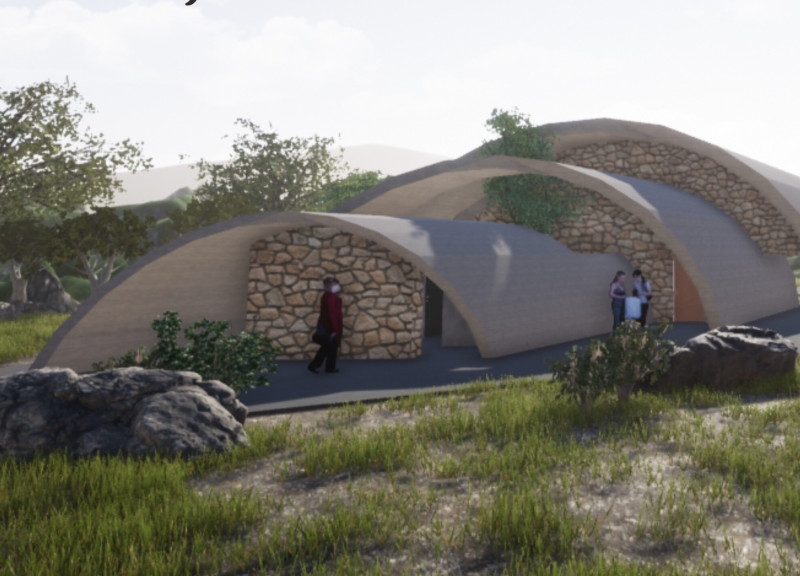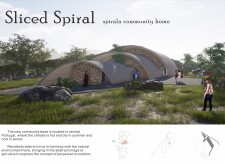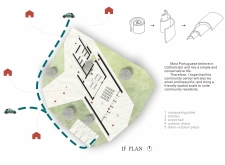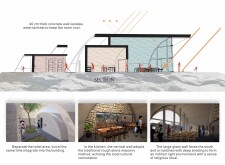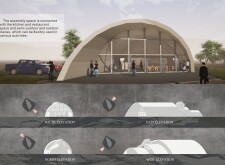5 key facts about this project
Functionally, the project is designed to accommodate communal living, providing essential facilities such as a fully equipped kitchen, an event hall, a composting toilet, and spaces dedicated to both indoor and outdoor gatherings. The layout emphasizes interconnectedness, with designated paths allowing for easy movement between different areas of the home. The intelligent organization of spaces facilitates both individual privacy and community interaction, reflecting a modern approach to shared living.
Key design elements include the building's distinctive arched form, which not only provides structural integrity but also creates a spacious and inviting interior. The roof, designed with a spiraling curve, enables natural light to permeate the spaces underneath, fostering a warm and inviting atmosphere. This thoughtful approach to lighting speaks to the project’s commitment to integrating natural elements, ensuring that dwellers experience a strong connection to their surroundings.
Materiality is another focal point of the Sliced Spiral project. The use of local stone and concrete serves to root the design in its geographical context, where these materials are readily available and culturally significant. The rough stone finishes, particularly in areas like the kitchen, evoke a sense of authenticity and craftsmanship that resonates with the region's architectural heritage. Expansive glass facades enhance this connection, blurring the lines between indoor and outdoor environments and allowing residents to engage with the landscape beyond.
The project also introduces a flexible approach to space utilization. The dining and kitchen areas are designed to encourage communal meals and gatherings, while semi-outdoor plazas serve as informal meeting points. This flexibility is integral to the building’s purpose, fostering a sense of community among residents while accommodating various activities and events.
Sustainability features prominently in the design philosophy, where careful consideration of the local climate informs material choices and architectural decisions. The thick walls provide insulation against temperature extremes, reducing the need for artificial heating and cooling. This energy-efficient approach not only minimizes the building's environmental impact but also enhances the residents' overall living experience.
The Sliced Spiral project stands out by merging traditional architectural practices with contemporary design ideas, illustrating how modern influences can respect and celebrate local cultural heritage. Its unique curvilinear form, thoughtful materiality, and focus on communal living create a cohesive and functional space that resonates with its environment.
For those interested in the intricate details of the architecture, exploring the architectural plans, sections, and designs of the Sliced Spiral project can provide deeper insights into this community-centric vision. The emphasis on exploring architectural ideas within the project's framework encourages understanding of how space can be reimagined for contemporary communal living. Visit the project presentation to delve into these elements and gain a broader appreciation of the design’s nuances.


